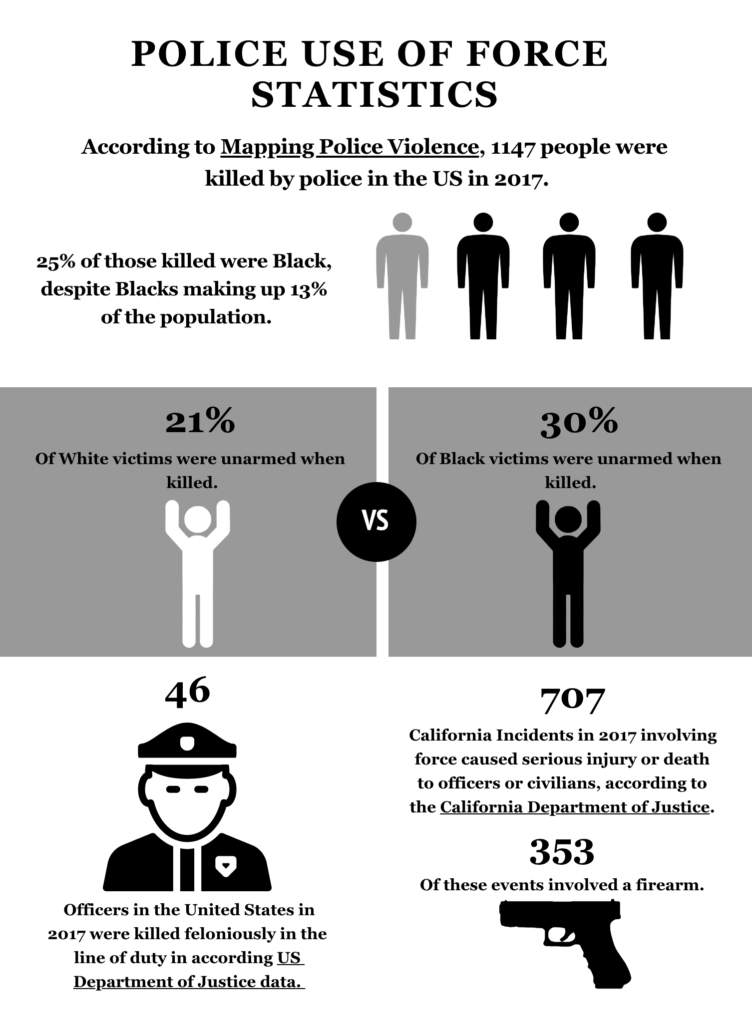A bill aiming to reduce deadly police shootings advanced with a 5-2 vote by California legislators on April 9, despite law enforcement agencies’ support of a rival bill.
In response to protests over police officers killing young men of color such as Alex Nieto and Stephon Clark, lawmakers weighed two competing bills that would affect the use of deadly force by law enforcement. The California State Assembly Committee on Public Safety moved forward with Assembly Bill 392, despite some police organizations citing Senate Bill 230 as the better proposal.
City College of San Francisco professor Benjamin Bac Sierra started the ‘Amor for Alex Nieto’ movement after Nieto was fatally shot 59 times by San Francisco police officers in 2014.
“I think these [bills] are a step in [the] right direction, but it’s yet to be seen,” Sierra said.
Sierra said he puts more faith in the people rather than politicians to enact change, and that it is up to communities to hold police officers accountable for their actions.
“When we come together with spirit, relentlessness, amor, I think that’s more powerful than any legislation,” Sierra said.
Assembly members Shirley Weber and Kevin McCarty introduced AB 392 on Feb. 6, which if enacted would change the standard by which deadly force is justified from a “reasonable standard” to a “necessary standard.” Weber has been considering use of force legislation for quite some time, according to her communications director Joe Kocurek.
“When Stephon Clark was killed last year, everybody really started to think heavily about what needed to change in policing, especially since a good number of people are being killed for no reason at all,” Kocurek said. “We don’t want officers to compromise their own life, but we don’t want people to be dead who don’t need to be dead.”
According to a report from Mapping Police Violence, police killed an estimated 1,147 people in 2017. 25 percent were Black and 30 percent of Black people killed by police were unarmed. Black people are three times more likely to be killed by police than whites.
With AB 392, police could use deadly force only when absolutely necessary to prevent harm to an officer or another person. Under current case law, police need to have a “reasonable fear” that imminent harm will come to the police or public if force is not used against an individual fleeing or resisting arrest.
AB 392 states that an “imminent” threat of death or injury is present and justifies force when: “Based on the totality of the circumstances, a reasonable officer in the same situation would believe that a person has the present ability, opportunity, and apparent intent to immediately cause death or serious bodily injury to the peace officer or another person. An imminent harm is not merely a fear of future harm, no matter how great the fear and no matter how great the likelihood of the harm, but is one that, from appearances, must be instantly confronted and addressed.”
The California State Sheriffs’ Association opposes AB 392 and supports SB 230, according to CSSA Legislative Director Cory Salzillo.
“We’re concerned that [the change in standard resulting from AB 392] will create hesitation among officers or a lack of action where they are put in a situation that requires a split-second decision to protect public safety,” Salzillo said.
There were 158 law enforcement officers killed in the line of duty last year nationally, according to the National Law Enforcement Officers Memorial Fund.
SB 230, introduced by Sen. Anna Caballero (D-Salinas), would provide law enforcement agencies with additional guidance, training and review on appropriate times to apply force in situations. It would also require that officers report any excessive force used
by a fellow officer.
According to Salzillo, altering the legal standard is not the solution to problems surrounding the use of force.
He said CSSA backs SB 230 for its potential to improve training and create comprehensive guidelines for officers across the state, which would ensure the well-being of police officers and the public.
In defense of AB 392, Kocurek maintained that training inevitably follows after standards change.
“Officers are better equipped to manage these situations, de-escalate where they can and only shoot when they have to,” Kocurek said.
Kocurek said SB 230 maintains the status quo. He said the bill doesn’t require de-escalation, but merely has officers consider such tactics.
“It doesn’t change the standard at all, which is this wide latitude for shooting folks,” Kocurek said. “The bill does nothing new. It does nothing to prevent the deaths that we’re trying to prevent.”







